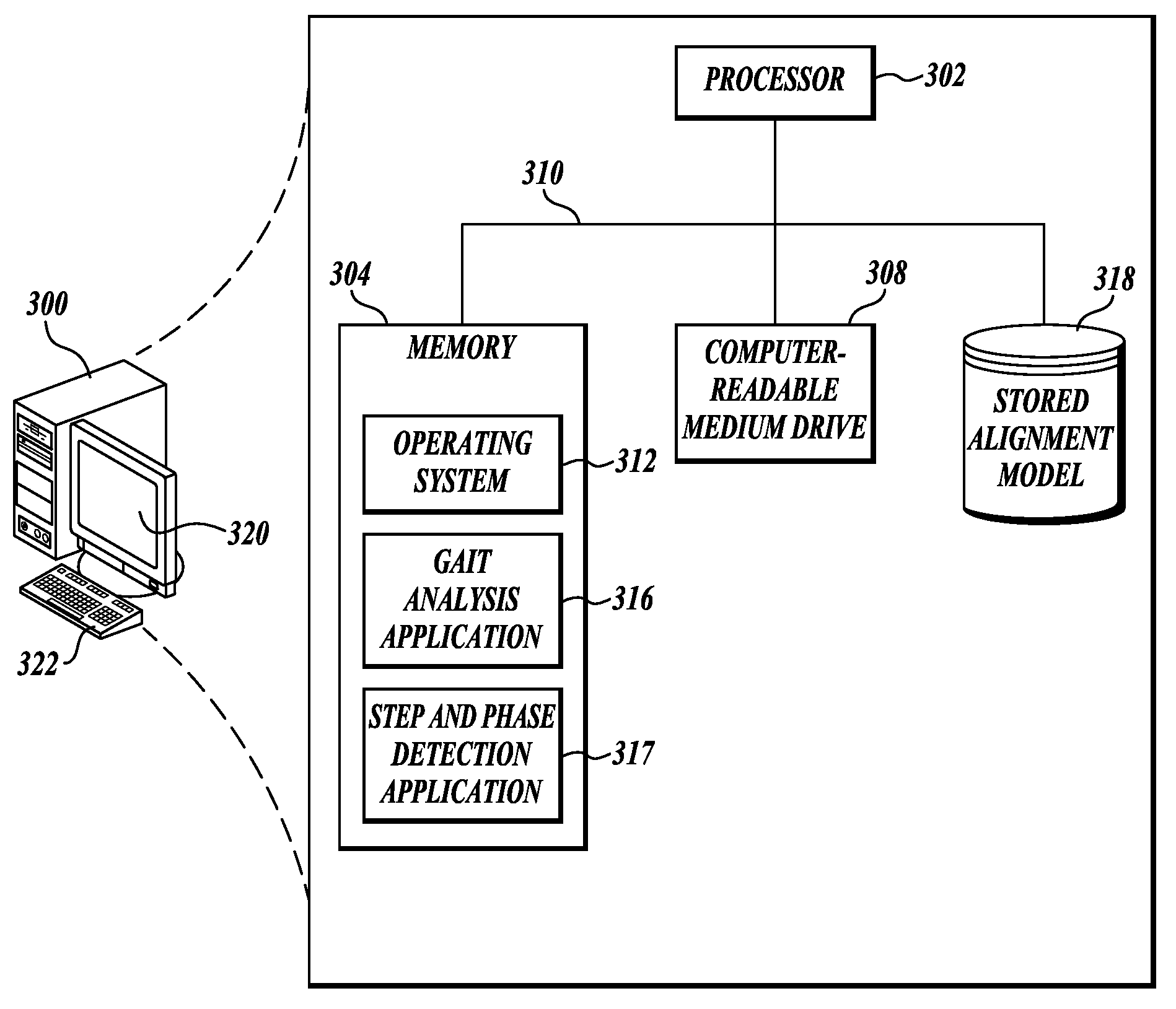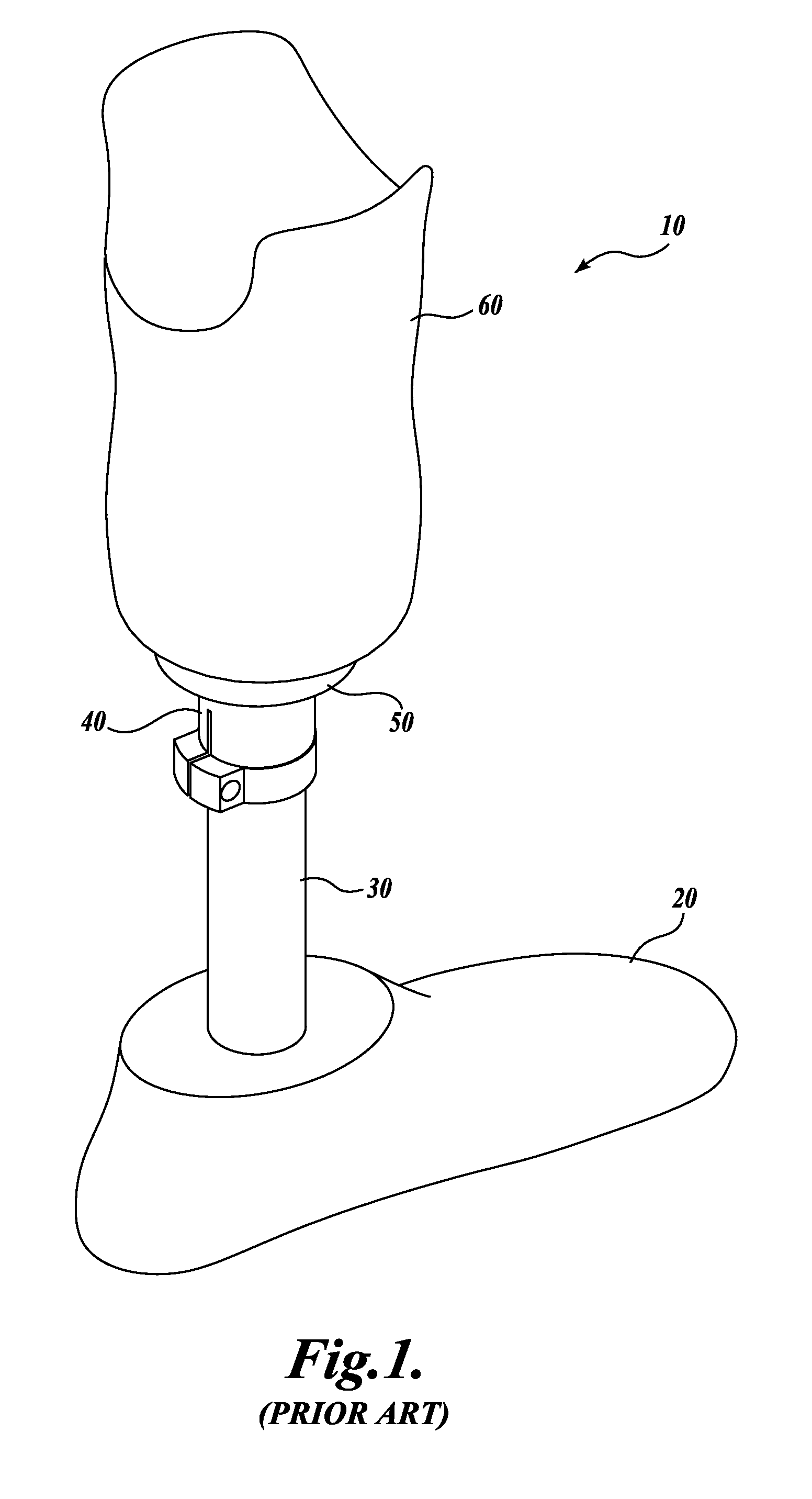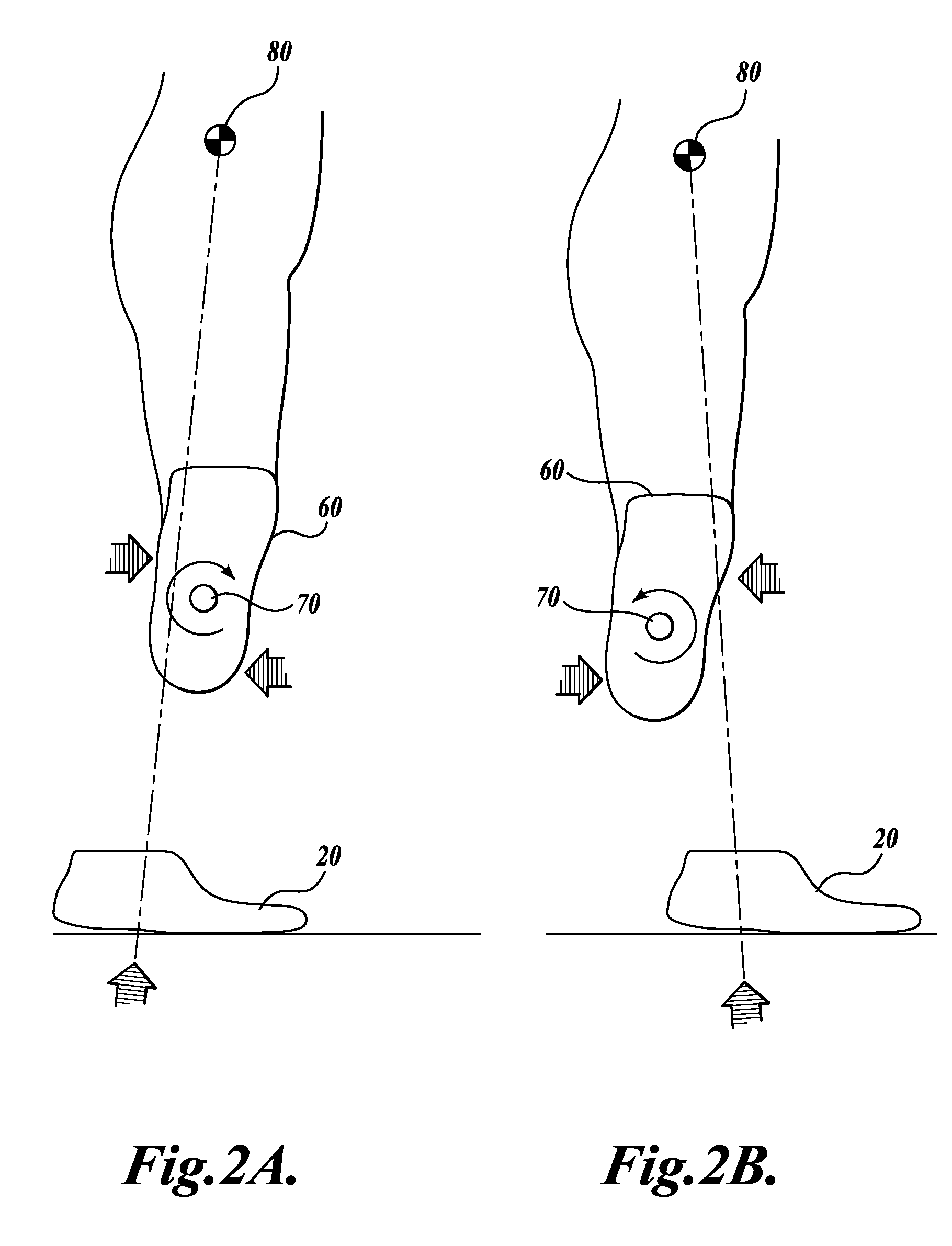Method for aligning a prosthesis
a prosthesis and alignment technology, applied in the field of methods for aligning prostheses, can solve the problems of inconvenient and inconvenient practice of prosthesis alignment, little progress has been made in giving a prosthetist the tools needed to optimize this aspect of prosthetic care, and inconsistent practi
- Summary
- Abstract
- Description
- Claims
- Application Information
AI Technical Summary
Benefits of technology
Problems solved by technology
Method used
Image
Examples
Embodiment Construction
FIGS. 2A, 2B, 3A, and 3B are intended to illustrate the moments experienced at the prosthesis socket 60 that affect the comfort and function of the prosthesis. Moments are induced at the socket 60, generally when there are unbalanced forces acting on opposite sides of a theoretical reference point 70 of the socket 60. For example, the more the foot 20 is behind the center of rotation 70, the more that a clockwise moment in the anterior / posterior plane is experienced at the socket 60. On the other hand, if the foot 20 is moved forward of the reference point 70, a counterclockwise moment in the anterior / posterior plane is experienced at the socket 60. Similar forces can be experienced in the right / left plane.
For example, referring to FIGS. 3A and 3B, the more the foot 20 is moved to the left of the reference point 70, the more a counterclockwise moment in the right / left plane is experienced at the socket 60. On the other hand, if the foot 20 is moved to the right of the reference poin...
PUM
 Login to View More
Login to View More Abstract
Description
Claims
Application Information
 Login to View More
Login to View More - R&D
- Intellectual Property
- Life Sciences
- Materials
- Tech Scout
- Unparalleled Data Quality
- Higher Quality Content
- 60% Fewer Hallucinations
Browse by: Latest US Patents, China's latest patents, Technical Efficacy Thesaurus, Application Domain, Technology Topic, Popular Technical Reports.
© 2025 PatSnap. All rights reserved.Legal|Privacy policy|Modern Slavery Act Transparency Statement|Sitemap|About US| Contact US: help@patsnap.com



